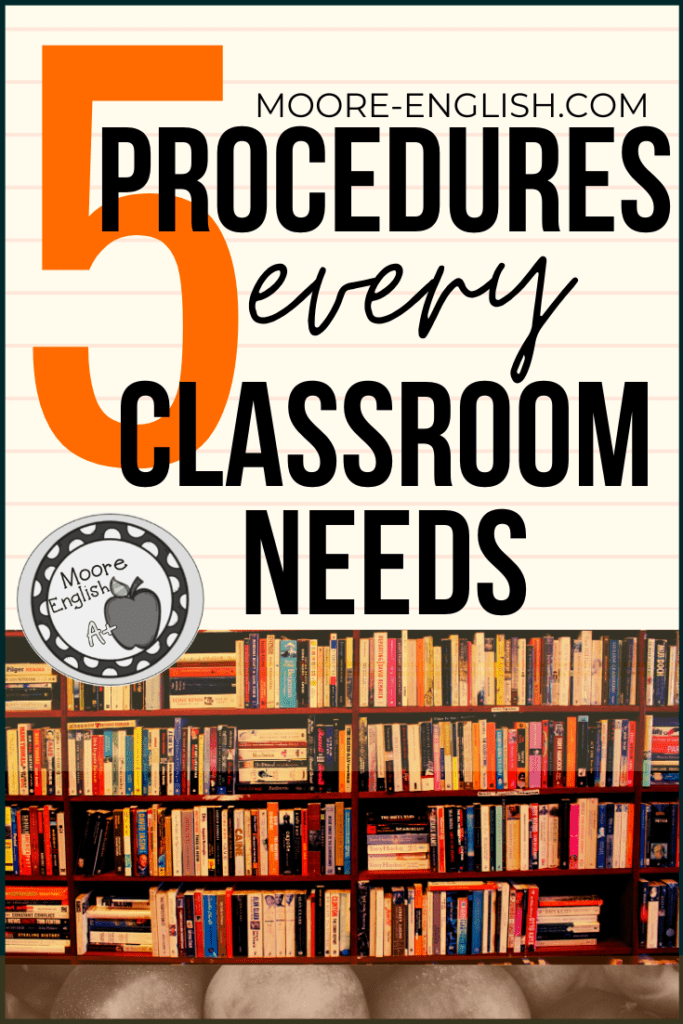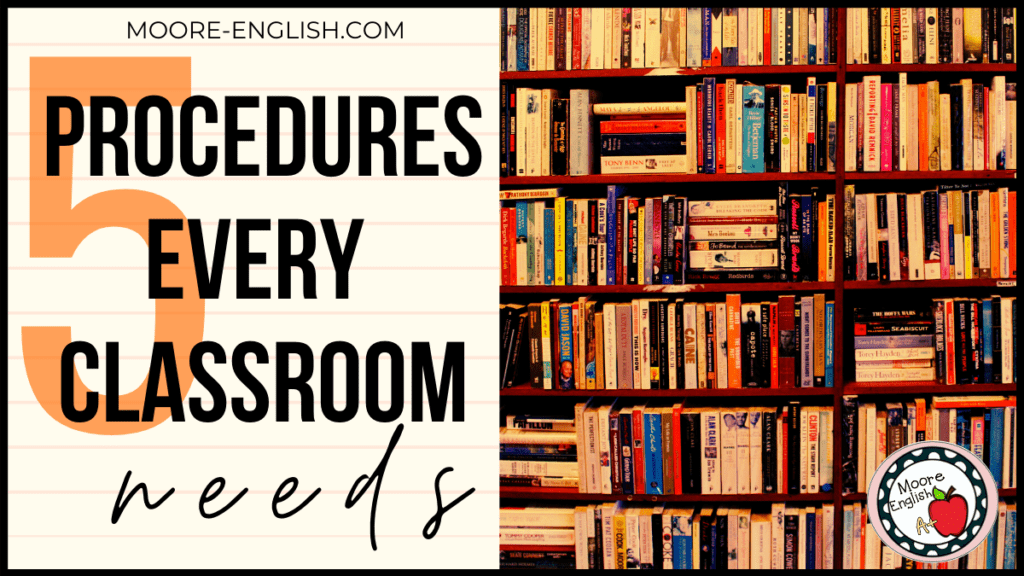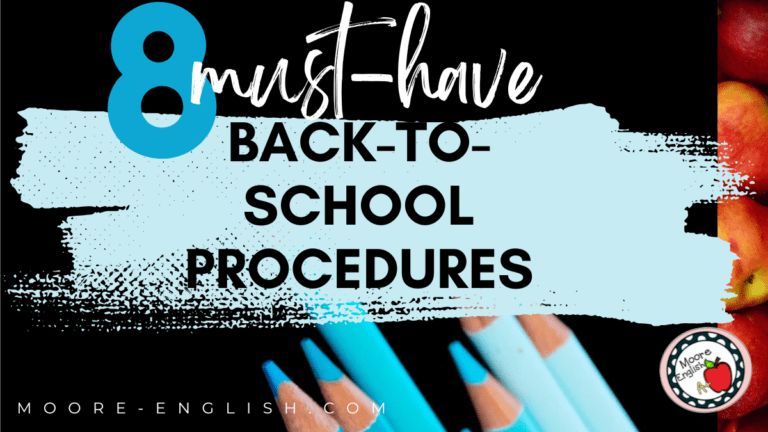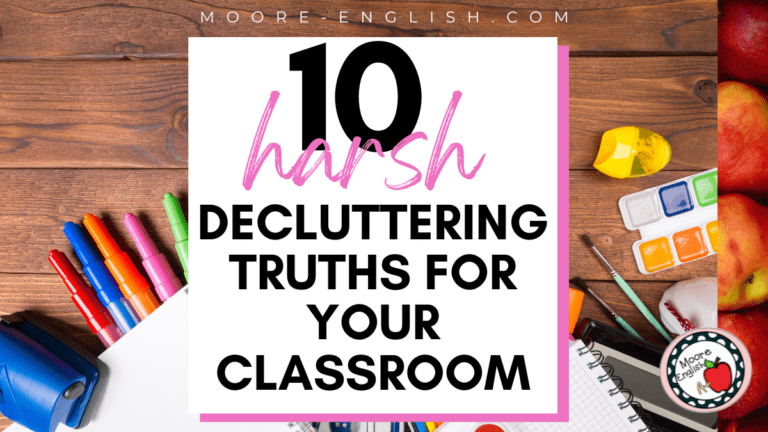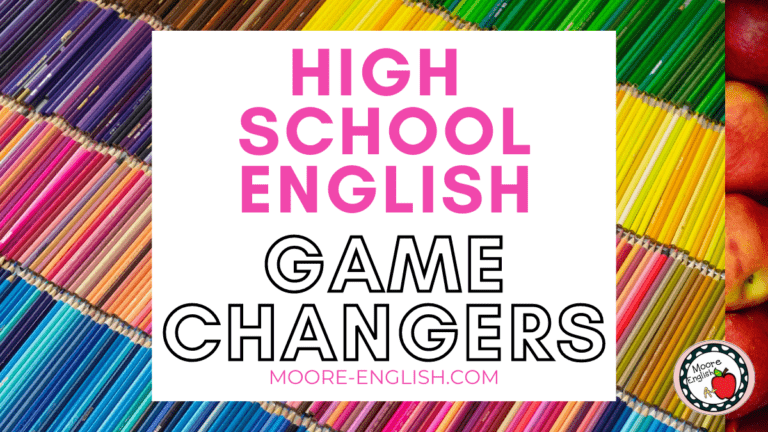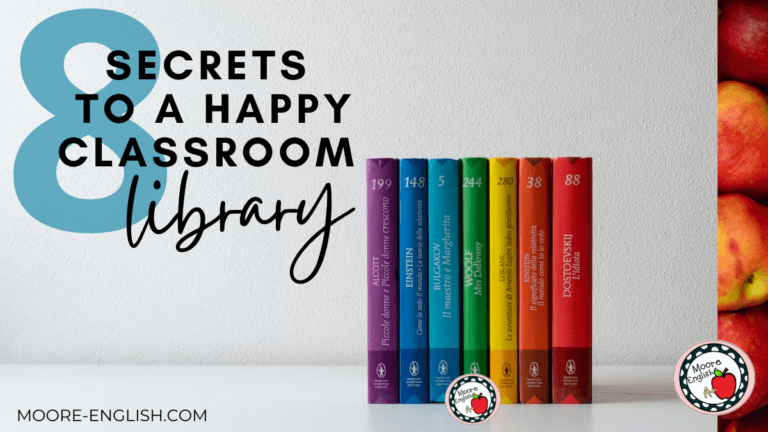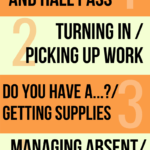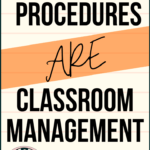A few years ago, our district-wide book study was The Classroom Management Book by Harry T. and Rosemary Wong. It’s an excellent guide to beginning the school year and managing your classroom.
Part of my district’s book study was to have each teacher create a presentation of classroom procedures. It was a meaningful exercise. But some people ended up with 50 classroom procedures and spent the first day of class “teaching” all 50 procedures! That’s too much for kiddos on day one. So I narrowed it down to the 5 Procedures Every Teacher Needs.
This post this post may contain affiliate links. Please read the Terms of Use.
Classroom Procedure Essentials
1. Bathroom and Hall Passes. Different schools have different expectations for bathroom and hall passes. So begin to develop your system within your building’s expectations. Regardless of your building’s expectations, I have three suggestions.
- First, unless a student is bleeding, has open bathroom privileges, or is otherwise in serious danger, when they ask to leave the room, say “no.” That may sound cold. But I guarantee that after the first two or three students ask, fewer students will ask. When a student asks a second time, I usually know their need is real.
- Second, when high school students want the bathroom pass, I require them to leave their cell phone in the room. This has cut down on my students’ social bathroom trips.
- Keep the pass out of sight. Not only does this prevent students from sneaking the pass, there’s truth to “out of sight, out of mind.”
- Finally, keep a bottle of hand sanitizer next to the bathroom pass. Help keep your classroom and your kiddos clean!
Using Classroom Procedures to Organize
2. Turning in Work. Develop a system for turning in work, and stick to it. I use turn-in trays and have one for each class. When students try to hand me work or drop it on my desk, I tell them to put it in the tray.
On the first day, it’s helpful to have something for students to “practice” turning in. I have students turn in their get-to-know-you activity as practice.
In the same vein, when I have students pass their papers in, I use the same procedure every time. Consistency is key in developing classroom procedures.
3. Do you have a….? (Getting supplies). Regardless of what grade you teach, you need a procedure to address the constant “Do you have a pencil? A tissue? A stapler? An extra pair of socks?”
- For younger students, you may need procedures to handle each of these questions: a designated time in the morning for sharpening pencils, a set of finger signals for getting a tissue, a table basket for extra supplies.
- But at the high-school level, I just have a May I Borrow…shelf, and it is a game changer. On the shelf, I keep spare pens, pencils, markers, crayons, staplers, scissors, glue, tissues, band aids, paper. I keep everything on that shelf, and any time students ask, I direct them to the shelf. If it’s not on the shelf, they know I don’t have it, and they ask a neighbor. Like any other procedures, this only works if you are consistent.
Classroom Procedures are Classroom Management
4. Managing Absent Work. My first year of teaching, I walked in without an absent-work system. I didn’t have a way for students to get absent work or a way for them to turn it in. That was a mistake. So the next year, I overcorrected and developed an absent-work system that was too complicated. So for the past two years, I’ve used this Absent Slip from Free to Discover.
I copy these slips on colored paper, and when a student is absent, their desk buddy fills out the slip, staples any new work or work I handed back to the slip, and sets in in the Absent Tray.
When students return, I point them to the tray. Until they’ve checked the tray and the Google Classroom, they can’t ask me what they missed. If you’ve read this far, you’re probably seeing a trend. Design classroom procedures that empower students and promote accountability.
5. Entering and Exiting the Classroom. Make sure students know how to enter and exit your classroom. The beginning of class sets the tone for the entire day. So make sure when students come in they have something to do, know what to do, and know how to begin.
For my students, we do daily grammar, vocabulary, and test practice. It’s on the board when they enter the room. And students know where to go to get started on the work. When students know that they have something to work on as soon as they enter, they waste less class time. Similarly, when students know the expectations for leaving the room, they are less likely to waste time or get in trouble.
Bottom line: Classroom procedures are the oil that keeps learning on the tracks. They’re so important I’ve talked about them twice before, and I’m sure I’ll talk about them again. Which classroom procedures are most important for your classroom? Share your best ideas with us in the comments.

